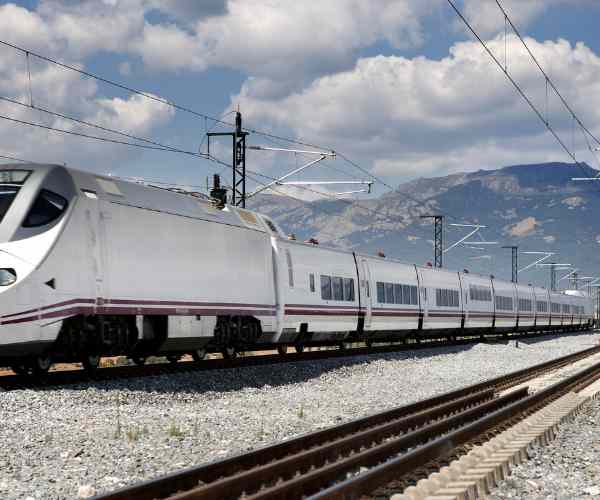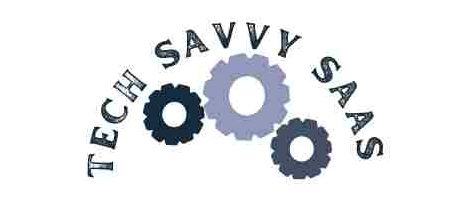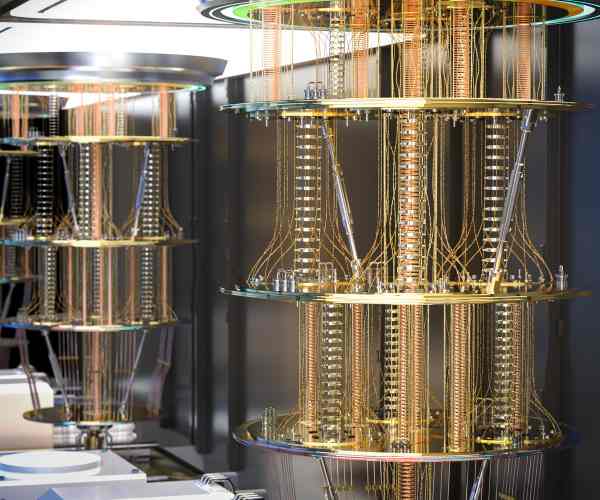Hyperloop is a groundbreaking transportation concept that could revolutionize how people travel. Elon Musk, the visionary entrepreneur behind companies like Tesla and SpaceX, first introduced the Hyperloop concept in a white paper published in 2013. He described it as a “fifth mode of transportation”—one that could potentially surpass the speed, efficiency, and convenience of trains, cars, planes, and boats.
The Hyperloop system is designed to transport passengers and freight in pods through vacuum-sealed tubes. These tubes use magnetic levitation (maglev) to elevate the pods above the track, reducing friction and allowing them to travel at supersonic speeds—potentially exceeding 700 miles per hour (mph). For comparison, traditional high-speed trains, like Japan’s Shinkansen, travel at around 200 mph, while commercial airplanes cruise at approximately 500 mph.
One of the most innovative aspects of the Hyperloop is its ability to operate within a near-vacuum environment. By significantly lowering air resistance inside the tubes, the pods can maintain high speeds with minimal energy consumption. This technological breakthrough is expected to make the Hyperloop not only faster than existing modes of transportation but also more energy-efficient and environmentally friendly.
Elon Musk’s vision for the Hyperloop goes beyond just a new mode of transportation; it represents a significant leap in how we think about travel. Unlike traditional infrastructure, which requires extensive land use and maintenance, the Hyperloop system could be built underground or elevated on pylons, reducing its environmental footprint. Musk initially proposed that solar panels could be installed along the tubes to power the system, further enhancing its sustainability.

Why does the hyperloop matter?
The Hyperloop is poised to transform the way we think about commuting and long-distance travel. Current transportation systems, such as trains, cars, and airplanes, are often hindered by congestion, high costs, and environmental impacts. Hyperloop transportation technologies promise to address these issues by offering a faster, more efficient, and more sustainable alternative.
For example, consider the potential impact on a route like Los Angeles to San Francisco—a journey that currently takes approximately 6 hours by car or 1.5 hours by plane (excluding airport procedures). With the Hyperloop, this travel time could be reduced to just 30 minutes. This dramatic reduction in travel time could reshape entire economies, enabling more frequent and convenient travel for both business and leisure.
In addition to speed, the Hyperloop system offers the potential for enhanced efficiency. Traditional forms of transportation consume significant amounts of energy and produce considerable emissions. In contrast, the Hyperloop could operate on renewable energy sources, such as solar power, significantly reducing the carbon footprint of travel.
Moreover, the Hyperloop could alleviate the strain on the current infrastructure. With urban populations growing and roads becoming increasingly congested, the need for alternative transportation solutions is more pressing than ever. The Hyperloop could offer a viable solution, providing a high-capacity system that moves people and goods quickly and reliably without contributing to road traffic or requiring extensive land use.
The Vision for Hyperloop and the Future of High-Speed Transportation
Imagine a world where you could travel from New York City to Washington, D.C., in under 30 minutes. This is the vision that hyperloop transportation technologies bring to the table—a future where distances shrink and the world feels more connected than ever before.
Companies like Virgin Hyperloop are at the forefront of making this vision a reality. Virgin Hyperloop has already conducted successful test runs, reaching speeds of over 100 mph with passengers on board. These tests are just the beginning, as the company aims to create a network of hyperloop systems that could connect major cities across the globe.
The implications of such a transportation network are profound. For instance, businesses could operate more efficiently, with employees traveling between cities for meetings or commuting from suburbs that were previously considered too far from urban centers. The Hyperloop could foster economic growth by connecting previously isolated regions, opening up new markets, and creating opportunities for development and investment.
Furthermore, the Hyperloop represents a shift toward more sustainable transportation solutions. With growing concerns about climate change and the environmental impact of traditional transportation, the Hyperloop offers a cleaner alternative. By utilizing renewable energy and reducing reliance on fossil fuels, it aligns with global efforts to reduce greenhouse gas emissions and combat climate change.
How Hyperloop Works: Breaking Down the Technology
The Science Behind Hyperloop
Magnetic Levitation (Maglev) Technology
The Hyperloop system relies on magnetic levitation (maglev) technology to achieve its remarkable speeds. Hyperloop pods use permanent magnets for electromagnetic suspension, allowing them to float above the track. This approach eliminates the friction that typically slows down traditional vehicles. Unlike traditional maglev trains, which operate on elevated tracks with limited speed, the Hyperloop optimizes this technology for a vacuum-sealed environment.
Maglev technology in Hyperloop systems is akin to air hockey tables, where the friction is minimal and the surface is smooth. This setup allows for near-frictionless movement, enabling the pods to achieve supersonic speeds efficiently. The combination of permanent magnets and electromagnetic suspension creates a stable and efficient mode of transportation, pushing the boundaries of current travel speeds.
Vacuum-Sealed Tubes
The Hyperloop system operates within vacuum-sealed tubes, a key component that drastically reduces air resistance. By creating a near-vacuum environment inside these tubes, the Hyperloop minimizes drag, allowing the pods to travel at high velocities. This design is similar to an air hockey table, where the low friction environment allows the puck to glide with minimal resistance.
This vacuum-sealed approach is crucial for achieving supersonic speeds. Without air resistance, the pods can maintain high velocities with significantly less energy. The reduced friction within these tubes contributes to the Hyperloop’s efficiency and speed, making it a standout in the realm of high-speed transportation.
The Engineering Challenges
Building the hyperloop infrastructure involves overcoming several significant engineering challenges. Creating extensive tunnels for the vacuum-sealed tubes requires advanced engineering techniques and substantial investment. The Boring Company, another venture founded by Elon Musk, is working on innovative methods to reduce the costs and complexity of tunneling. Their efforts include exploring new tunneling technologies and improving efficiency in construction processes.
The development of vacuum pumps is another crucial aspect of hyperloop infrastructure. These pumps are essential for maintaining the low-pressure environment within the tubes. Ensuring that these systems are both effective and cost-efficient is a significant challenge that requires ongoing research and development.
Ensuring Safety and Reliability
Safety is a paramount concern for hyperloop systems. The design incorporates numerous fail-safes and redundant systems to ensure the safety of passengers and the reliability of the transportation method. For example, emergency braking systems and automated monitoring are built into the design to handle unexpected situations and maintain operational safety.
Virgin Hyperloop, a leader in Hyperloop development, has demonstrated the effectiveness of these safety measures through successful test runs. These tests have shown that the Hyperloop can operate safely and reliably, even under challenging conditions. The ongoing refinement of safety protocols and technology is critical to making the Hyperloop a viable mode of transportation.
The Potential Impact of Hyperloop on the Future of High-Speed Transportation
Hyperloop’s Environmental Benefits
Reducing carbon footprints
The Hyperloop has the potential to significantly reduce the carbon footprint of transportation. Unlike traditional high-speed rail and air travel, the Hyperloop could achieve lower energy consumption due to its use of renewable energy sources. The system is designed to integrate solar panels along the tubes to power its operations. This approach aligns with global efforts to reduce greenhouse gas emissions and combat climate change.
The use of solar panels and other sustainable energy sources can make the Hyperloop a greener alternative to conventional modes of transportation. By leveraging renewable energy, the Hyperloop not only addresses environmental concerns but also contributes to the overall sustainability of the transportation sector.
Sustainable energy sources
Hyperloop transportation technologies are designed with sustainability in mind. Sustainable energy sources, such as solar power, play a crucial role in the operation of the hyperloop system. The integration of these energy sources helps lower the environmental impact and supports the goal of creating a more sustainable transportation solution.
The potential for the Hyperloop to operate with minimal reliance on fossil fuels underscores its role in promoting a greener future. By harnessing renewable energy and reducing energy consumption, the Hyperloop sets a precedent for future transportation technologies.
Economic and social implications
Connecting distant cities
The Hyperloop could revolutionize connectivity between distant cities, making it possible to travel between urban centers that are currently separated by hours of travel time. For instance, a Hyperloop route between Los Angeles and San Francisco could enable daily commuting between these cities, transforming economic and social dynamics.
Such a rapid and efficient mode of transportation would open up new economic opportunities by facilitating easier access to different markets and industries. This could lead to increased business activities, enhanced collaboration, and a more interconnected economy.
Boosting local economies
The introduction of the Hyperloop could stimulate local economies by reducing travel time and increasing economic activity. With faster connections between cities, regions could experience a boost in tourism, commerce, and investment. The influx of passengers and freight would create new business opportunities and drive economic growth in previously isolated areas.
The potential for the Hyperloop to act as a catalyst for regional development and economic expansion highlights its transformative impact on the future of high-speed transportation. By enhancing connectivity and promoting economic integration, the Hyperloop could reshape the landscape of modern travel and economic activity.
Real-life examples and case studies
Hyperloop Projects Around the World
Virgin Hyperloop’s Test Runs
In 2020, Virgin Hyperloop achieved a significant milestone by conducting its first passenger test run in Las Vegas. During this test, the Hyperloop pod reached speeds of 107 mph, demonstrating the viability of hyperloop transportation technologies. This test run was conducted on a specially designed test track, which was pivotal in validating the Hyperloop concept.
The success of this test run highlights the potential of Hyperloop technology to transform high-speed transportation. As a result, it has paved the way for further developments and tests to improve speed, safety, and efficiency. The ongoing development by Virgin Hyperloop underscores the progress being made in bringing this innovative mode of transport to reality.
International Hyperloop Initiatives
Several countries are exploring hyperloop systems as part of their national transportation strategies. India and the UAE are among the nations investigating how the Hyperloop could integrate into their existing transportation networks.
The Delft Hyperloop team, associated with the Technical University of Delft in the Netherlands, has also made notable contributions to Hyperloop technology. Their research and development efforts focus on enhancing hyperloop infrastructure, pod design, and propulsion systems. These international initiatives are critical in advancing the Hyperloop from concept to a practical, deployable transportation solution.
Lessons from High-Speed Rail Systems
What Can Hyperloop Learn from Existing High-Speed Rails?
The development of the Hyperloop draws valuable lessons from existing high-speed rail systems. For instance, Transrapid Maglev in Germany and Japan’s Shinkansen have set benchmarks for speed, safety, and efficiency in rail transportation.
Transrapid Maglev has provided insights into magnetic levitation and high-speed travel. Its experience with maglev technology is instrumental in addressing similar challenges in hyperloop design. Meanwhile, Japan’s Shinkansen has demonstrated the effectiveness of advanced rail technologies and the importance of rigorous safety protocols.
By analyzing the successes and limitations of these systems, Hyperloop developers can better address the challenges of creating a reliable and efficient Hyperloop system. This includes overcoming technical obstacles and ensuring that the Hyperloop meets or exceeds the performance standards set by existing high-speed rail technologies.
Challenges and Criticisms: Is Hyperloop the Future of High-Speed Transportation?
Financial Viability
The cost of building hyperloop systems
The financial viability of the Hyperloop is a significant concern, with projected costs running into the billions for a single route. Estimates suggest that constructing hyperloop infrastructure, including vacuum-sealed tubes, tunnels, and propulsion systems, involves substantial investment.
Feasibility studies are ongoing to assess whether the benefits of Hyperloop technology justify the high costs. These studies examine factors such as cost efficiency, return on investment, and the potential for long-term savings. The results of these studies are crucial in determining the financial feasibility and overall sustainability of the Hyperloop as a mode of transportation.
Funding and investment challenges
Securing sufficient funding is a critical step in realizing the Hyperloop vision. The Hyperloop projects require significant investment from both the public and private sectors.
Funding challenges include attracting investment from venture capitalists, securing government grants, and partnering with corporations. Effective investment strategies and financial planning are essential to overcome these challenges and ensure the successful development and deployment of Hyperloop technology.
Technological and logistical hurdles
Addressing technical difficulties
The development of Hyperloop technologies faces several technical challenges. One of the primary difficulties is maintaining the vacuum within the tubes over long distances. Ensuring that the vacuum pumps and tube infrastructure function correctly is critical to achieving the desired supersonic speeds.
Other technical issues include developing reliable magnetic levitation systems, enhancing pod design, and ensuring system integration. Continuous research and development efforts are necessary to address these challenges and advance Hyperloop technology.
Regulatory and legal considerations
The Hyperloop must navigate a complex array of regulatory and legal challenges before it can become a mainstream mode of transportation.
Regulatory considerations include meeting safety standards, addressing environmental concerns, and complying with infrastructure laws. These regulations vary by region and require careful planning and coordination with regulatory bodies. Ensuring compliance with these requirements is essential for the successful implementation and operation of the Hyperloop system.
FAQs
How fast can a hyperloop go?
The Hyperloop pod can theoretically achieve speeds exceeding 760 mph, which is significantly faster than any current high-speed rail system. For example, Japan’s Shinkansen, one of the fastest trains in operation, reaches speeds of up to 374 mph, while the Transrapid Maglev in Germany operates at around 268 mph. The Hyperloop’s potential top speed is facilitated by its use of vacuum-sealed tubes and magnetic levitation technology, which minimize air resistance and friction.
Is Hyperloop safe?
Safety is a major focus for Hyperloop developers. The system is designed with several safety features to protect passengers. For instance, Virgin Hyperloop has conducted multiple tests to ensure safety standards are met. These tests include simulating emergency scenarios and evaluating fail-safes and redundant systems. The technology aims to prevent accidents by utilizing advanced sensors and automated control systems. Despite these advancements, ongoing research and testing are essential to address safety concerns and ensure the system’s reliability.
When will Hyperloop be available to the public?
The Hyperloop is still in the testing phase, with several projects conducting feasibility studies and building prototype systems. Experts suggest that we might see commercial Hyperloop routes within the next 5 to 10 years, depending on the success of ongoing tests and the resolution of technical and regulatory challenges. Companies like Virgin Hyperloop are working towards establishing initial routes, but the timeline for widespread adoption will depend on various factors, including infrastructure development and investment.
What do transportation experts say?
Transportation experts are generally optimistic about the Hyperloop’s future but recognize the challenges that lie ahead. Experts from the Technical University of Delft and Virgin Hyperloop One have highlighted the innovative aspects of the Hyperloop, such as its potential to reduce travel times drastically. However, they caution that substantial hurdles remain, including technical difficulties, regulatory approvals, and financial investments. According to experts, addressing these challenges will be crucial for transforming the Hyperloop from a conceptual idea into a practical mode of transportation.
Conclusion
The Hyperloop represents a transformative vision for the future of high-speed transportation. With its potential to drastically reduce travel times and enhance connectivity between cities, it could redefine the way we travel and transport goods. The integration of Hyperloop technology into modern infrastructure has the capability to significantly impact both daily commutes and long-distance travel.
As advancements continue and companies like Virgin Hyperloop push the boundaries of what is technically possible, the Hyperloop could evolve from a futuristic concept into a mainstream mode of transport. Its development could fundamentally alter the dynamics of transportation, potentially changing how we move, work, and live. The ongoing efforts in technology development, testing, and regulatory approval are critical steps toward realizing this innovative form of transportation.






